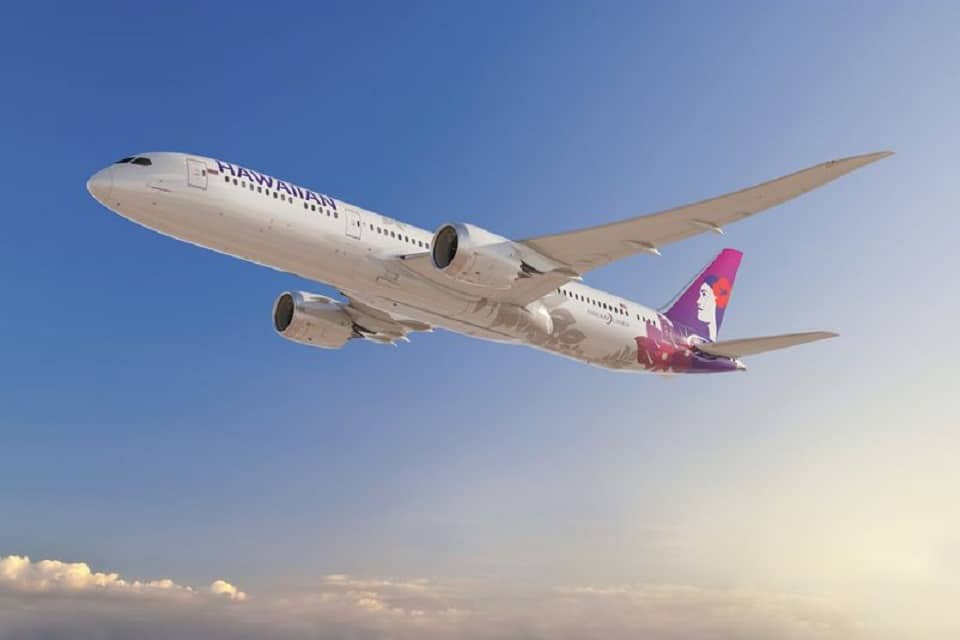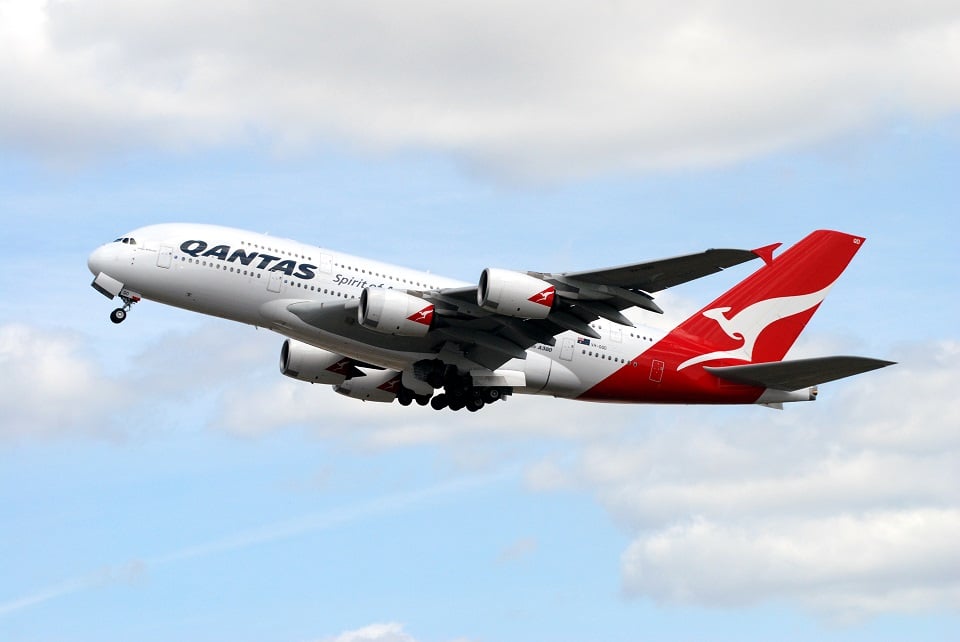Aviation
Top Quality Airline Rating 2018 in United States

Top Quality Airline Rating 2018 in United States
The Airline Quality Rating industry score for 2017 shows an industry that improved in overall performance quality over the previous year. Nine airlines (American, ExpressJet, Frontier, Hawaiian, JetBlue, SkyWest, Southwest, Spirit and United) showed improvement in AQR scores in 2017.
1. Alaska Airlines
Founded in 1932, Alaska Airlines began on a route between Anchorage and Bristol Bay, Alaska. Shortly thereafter in 1934, a merger took place with Star Air Service, and while the airline changed several times, the name Alaska Airlines prevailed. During the 1940s, charter work including the Berlin Airlift and Operation Magic Carpet, aided thousands. Additional mergers in the late 1960s with Alaska Coastal-Ellis and Cordova Airlines further expanded routes. Alaska Airlines was also involved in the construction of the trans-Alaska Pipeline.
Service has continued to expand. The airline now has routes to the East Coast, Washington D.C., multiple Midwestern towns as well as Hawaii. Alaska Airlines contributes its success to its people, “their caring, their resourcefulness, their integrity, their professionalism, and their spirit.”
2. Delta Air Lines
A legacy carrier today, Delta Air Lines began as a crop-dusting operation, the Huff Daland Dusters, in Macon, Georgia. Passenger operations commenced in 1929, and the company became known as Delta Air Lines in 1934. In 1955, Delta blazed the trail with the implementation of the hub and spoke system for air travel. The company expanded by merging with Northeast Airlines in 1972 and acquiring Pan Am’s trans-Atlantic routes and the Pan Am Shuttle in 1991. Further expansion took place in 2008, as Delta acquired Northwest Airlines.
Today, along with Delta Connection, Delta Air Lines serves 312 communities in 54 countries. Together with members of the SkyTeam alliance, destinations span 648 cities in 123 countries on six continents. Delta’s 80,000 employees maintain and operate a fleet exceeding 800 aircraft.
3. JetBlue
Early in 1999, David Neeleman laid forth his plans for a new airline. By the end of the year, JetBlue (initially known as “New Air”), had secured 75 aircraft and as many slots at JFK. In February 2000, the airline began operations. By the end of the same year, over one million passengers had flown on JetBlue.
In the years that have followed, JetBlue expanded its fleet and route structure. Today, JetBlue operates flights in North, Central and South America. JetBlue currently partners with 40 airlines globally, offering a plethora of destination cities.
4. Hawaiian Airlines
The first scheduled flight of Inter-Island Airways took off in 1929. Continuous growth ensued, and, in 1941, the airline was renamed Hawaiian Airlines in order to prepare for Transpacific flights. The following year, Hawaiian Airlines received the first U.S. Cargo Service Certificate.
Today, Hawaiian Airlines provides service to every major Hawaiian island, as well as destinations in North America, Asia and the South Pacific. Additionally, Hawaiian Airlines holds codeshare agreements with a multitude of airlines worldwide.
5. Southwest Airlines
The vision for Southwest Airlines was sketched out on a cocktail napkin. After many legal hurdles were cleared, Southwest began service in 1971. Passengers responded positively to the airline and its $20 fares. Routes expanded from Texas, reaching the coast in the 1980s. Growth continued in the decades following, with destinations spanning the United States from coast to coast.
Southwest is known for its 737 fleet, low fares, quick turns and corporate culture. Today, the airline serves approximately 100 communities in North America.
6. SkyWest Airlines
SkyWest Airlines commenced operations in 1972 with the purchase of Dixie Airlines. Operations expanded as the airline entered into interline agreements in 1977. In 1986, the airline began to offer stock publicly under the symbol SKYW. The following year, SkyWest became a Delta Connection carrier.
Today, SkyWest Airlines partners with United, Delta, Alaska Airlines and American Airlines. SkyWest flies to hundred of destinations in North America, operating approximately 1,700 flights per day.
7. Virgin America
Virgin America is a relative newcomer airline. Founded in 2007, Virgin America began as low-fare, high-technology company whose mission is “to make flying fun again”. Its fleet consists of Airbus A-320 aircraft.
Headquartered in San Francisco, California, Virgin America offers destinations in the continental United States, Hawaii, and Mexico. The airline employs approximately 3,000.
8. United Airlines
United Airlines is one of the United States’ original legacy carriers. With roots as United Aircraft and Transport Corporation, the company evolved into United Air Lines and was advertised as the “World’s Largest Air Transport System.”
Currently, United serves over 335 cities, of which 127 are international destinations. The route structure is very comprehensive. Nearly 87,500 people are employed by the airline. United is headquartered in Chicago, Illinois.
9. American Airlines
American Airlines began in 1926 with a flight piloted by Charles Lindberg carrying mail from St. Louis, Missouri to Chicago, Illinois. Soon thereafter, founder C.R. Smith was instrumental in bringing the DC-3, a plane that revolutionized aviation, into service. A legacy carrier, American Airlines continued to grow and expand routes over the decades that followed.
In 2013, American Airlines’ AMR Corporation and US Airways Group formed the American Airlines Group. Two years later, American and US Airways began operating as one airline. American Airlines is a member of the oneworld® alliance, which serves more than 1,000 cities in 160 countries.
10. ExpressJet
ExpressJet began operations as Atlantic Southeast Airlines. After acquiring Southeastern Airways in 1983, Atlantic Southeast became the first Delta Connection carrier. In 1996, Continental Airlines renamed Continental Express “ExpressJet” for market distinction. Fifteen years later, the new ExpressJet is formed when Atlantic Southeast and ExpressJet receive single operating certificate status from the Federal Aviation Administration.
Today, ExpressJet operates 1,500 flights per day to over 180 airports as American Eagle, Delta Connection and United Express. Their route map extends from the United States to destinations in Canada, Mexico and the Caribbean.
11. Frontier Airlines
The original Frontier began in 1950 as a result of a merger among Arizona Airways, Challenger Airlines and Monarch Airlines. The airline later purchased Central Airlines in 1967. After the industry was deregulated in 1978, intense competition ensued and Frontier was sold to People Express in 1985. Shortly thereafter, Continental purchased the airline and the original Frontier ended. Frontier reemerged with a plan in 1993, when former Frontier executives started a new Frontier, which began operating with two aircraft in 1994. Fifteen years later, Frontier was purchased by Republic Airlines. In 2013, Republic sold Frontier to Indigo Partners.
Frontier Airlines is headquartered in Denver, Colorado, and serves over 55 communities in the United States, Mexico and the Dominican Republic. Over 3,000 employees contribute to over 275 daily flights.
12. Spirit Airlines
Spirit Airlines began as Clippert Trucking Company in 1964. A decade later, the company was renamed Ground Air Transfer, Inc. The company then became Charter One and, in 1992 became Spirit Airlines. Scheduled passenger service followed.
Over the years, Spirit has operated as a low-cost and ultra low cost carrier in North, Central and South America, as well as the Caribbean. In 2004, Spirit began its transition to an all-Airbus fleet which serves over 50 communities.

Aviation
Lost Tool Found in Qantas A380 After 34 Flights

An Australian Transportation Safety Bureau (ATSB) investigation recently revealed that a Qantas A380 operated 34 flights with a 1.25-meter nylon tool lodged in one of its engines.
This turning tool, used during borescope inspections to rotate the intermediate-pressure compressor, was left behind during scheduled maintenance at Los Angeles on December 6, 2023. It remained inside the engine until it was discovered by maintenance staff during a subsequent check at Los Angeles on January 1, 2024.
China Takes the Lead in Sixth-Generation Fighters with White Emperor B
The ATSB report highlights two critical lapses. First, maintenance engineers failed to notice the tool during final checks for foreign objects after the borescope inspection. Second, the lost tool procedure was not activated when the tool was identified as missing.
The certifying engineer ultimately cleared the aircraft for service without accounting for the misplaced tool. During the time qantas films the tool was inside, the A380 completed 34 flight cycles, accumulating nearly 294 hours without any noticeable effect on engine performance.
Although the tool was deformed by high-energy airflow within the engine, there was no reported damage to the engine itself. ATSB Chief Commissioner Angus Mitchell commented.
India’s C-295 to Gain Advanced Weapons for Maritime Surveillance
“This incident underscores the importance of following established maintenance protocols. Engineers missed the tool during foreign object checks, and the required lost tool procedure wasn’t started after realizing the tool was missing.”
Following the investigation, the airline issued a safety directive, urging all engineering and tool storage teams to adhere strictly to these protocols to prevent similar incidents in the future.
A qantas spokesperson stated, “While the tool didn’t impact engine performance, we take this incident very seriously. It is critical to follow the correct lost tool procedures.”
-

 Aviation2 months ago
Aviation2 months agoBoeing confirms 797: A New Era for Mid-Size Aircraft
-

 Aviation2 months ago
Aviation2 months agoMicrosoft Flight Simulator Raises $3 Million to Bring Back the An-225 Mriya
-

 Aviation2 months ago
Aviation2 months agoLockheed and Tata Team Up to Build C-130J MRO Facility in India
-

 Airlines2 months ago
Airlines2 months agoQantas Engineers Stage Walkout Over Cost of Living Concerns
-

 Airlines2 months ago
Airlines2 months agoQatar Citizens Can Travel to the United States Without a Visa
-

 Aviation2 months ago
Aviation2 months agoBoeing Offers 25% Pay Increase & Promise to Build Next Plane in Seattle
-

 Aviation2 months ago
Aviation2 months agoQatar Airways bans these new Electronic Devices on plane
-

 Airlines2 months ago
Airlines2 months agoEmirates Ends 28-Year Singapore-Melbourne Fifth Freedom Route








